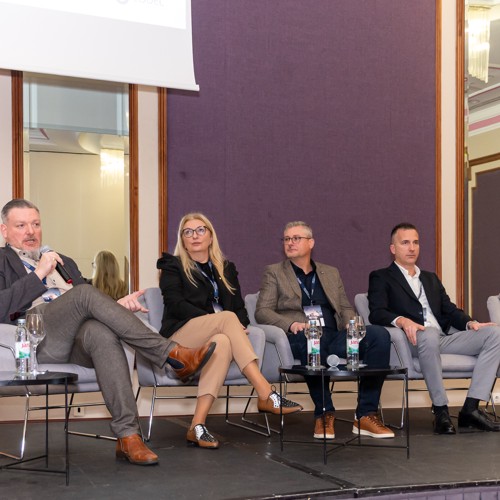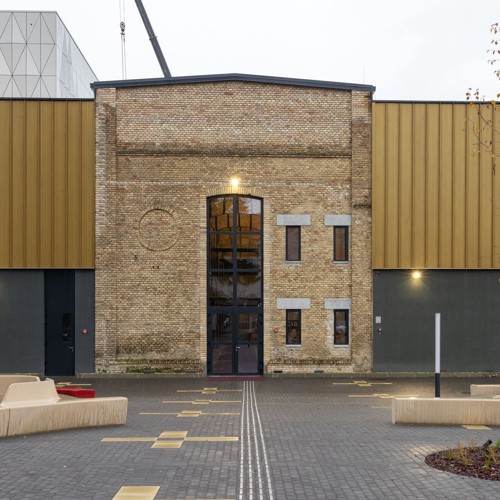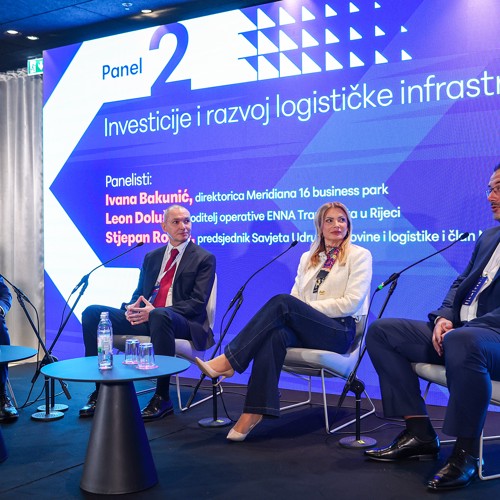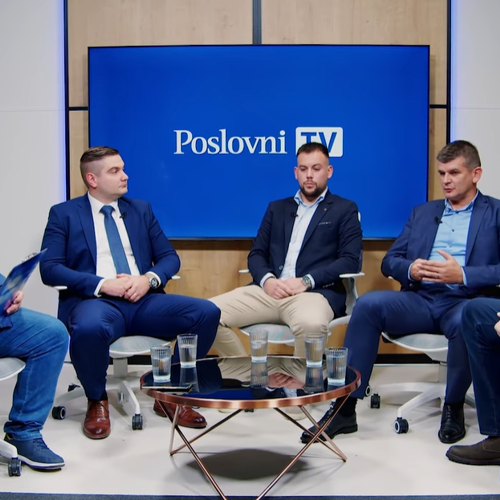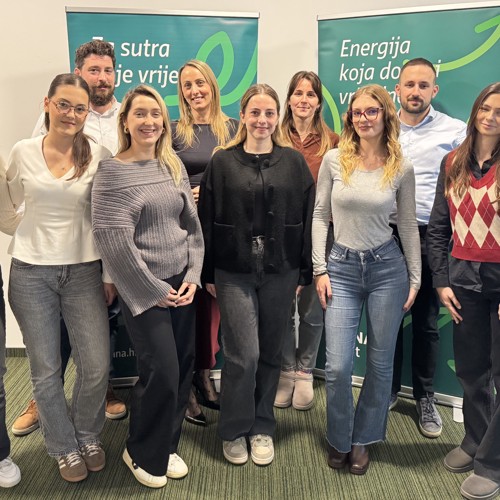Petar Glavaš participated in Conference on Railway Traffic Safety
“How Effective is the Railway Safety Management System?”
Date publishedOctober 16, 2025Zagreb, October 15, 2025 – Petar Glavaš, a member of the management boards of Enna Transport and Enna Logic, participated in the first thematic conference on railway traffic safety in Croatia, which brought together representatives from both the public and private sectors. The conference was held on Wednesday, October 15, 2025, and was organized by the Agency for Investigation of Accidents in Air, Maritime, and Railway Transport, the Railway Safety Agency, and the Croatian Society of Railway Engineers under the auspices of the Ministry of the Sea, Transport, and Infrastructure.
Petar Glavaš took part in a panel discussion entitled “How Effective is the Railway Safety Management System?” The panel was moderated by Mislav Togonal, and alongside Glavaš, the discussion included Alana Vukić, Director of the Agency for Investigation of Accidents in Air, Maritime, and Railway Transport, Želimir Delač, Director of the Railway Safety Agency; Vlado Lovrić, Head of Safety and Security at HŽ Passenger Transport, and Tomislav Petanović, Deputy Head of the Safety Management Office at HŽ Infrastructure.
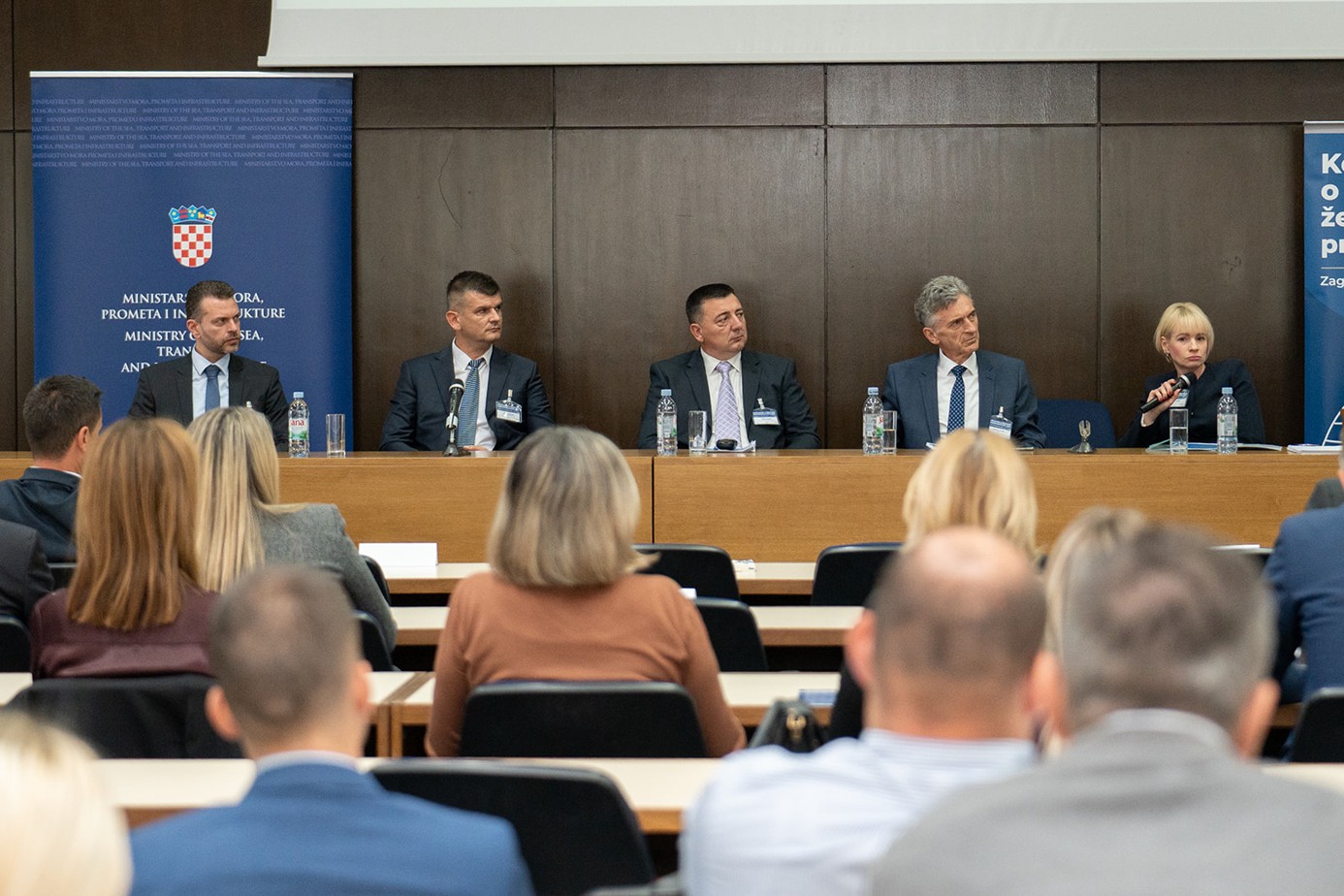
In the introductory part of the panel discussion, the current safety situation in rail transport was highlighted, along with the precautionary and protective measures applied daily to increase traffic safety. Emphasis was placed on the impact of the human factor, which, despite all implemented safety measures and technical improvements, still represents a major risk in the railway system. Carriers also face challenges from increasingly frequent track closures that complicate the transport of passengers and freight to their final destinations. Alternative routes must be sought, and cargo carriers are further challenged because passenger transport takes priority over freight.
“Track closures happen very frequently, and I can say that clients both understand and do not understand. They understand because they know that infrastructure works need to be carried out, and this is not only happening in Croatia but throughout the region. It is inevitable and takes years. Naturally, clients are not satisfied because they expect their goods as quickly as possible. What we can do is make every effort to ensure that goods and cargo reach their final destinations as soon as possible. In cooperation with Infrastructure, clients, and shipping companies, we strive to agree on the best possible model to deliver goods quickly, because there is always the possibility that a client may choose an alternative transport method or ultimately switch to road transport,” said Glavaš.
One of the key aspects in rail transport is interoperability. According to a report from the European Union Agency for Railways, which provides an overview for all member states, Croatia is at the bottom, said Želimir Delač.
“We are a company that started implementing interoperability from the beginning. Regarding the technical part, meaning the crossing of locomotives from one country to another, this is very well managed in Croatia in the context of the European Union. At the border, only drivers are changed. What we aim to achieve in the future is personnel interoperability. Today, you can drive a train through multiple countries with the same driver, respecting working hours and all other regulations. We work a lot with Bosnia and Herzegovina and Serbia, but this interoperability does not work well because they are considered third countries. Procedures are quite complex and consume a lot of time due to administration and bureaucracy,” emphasized Petar Glavaš.
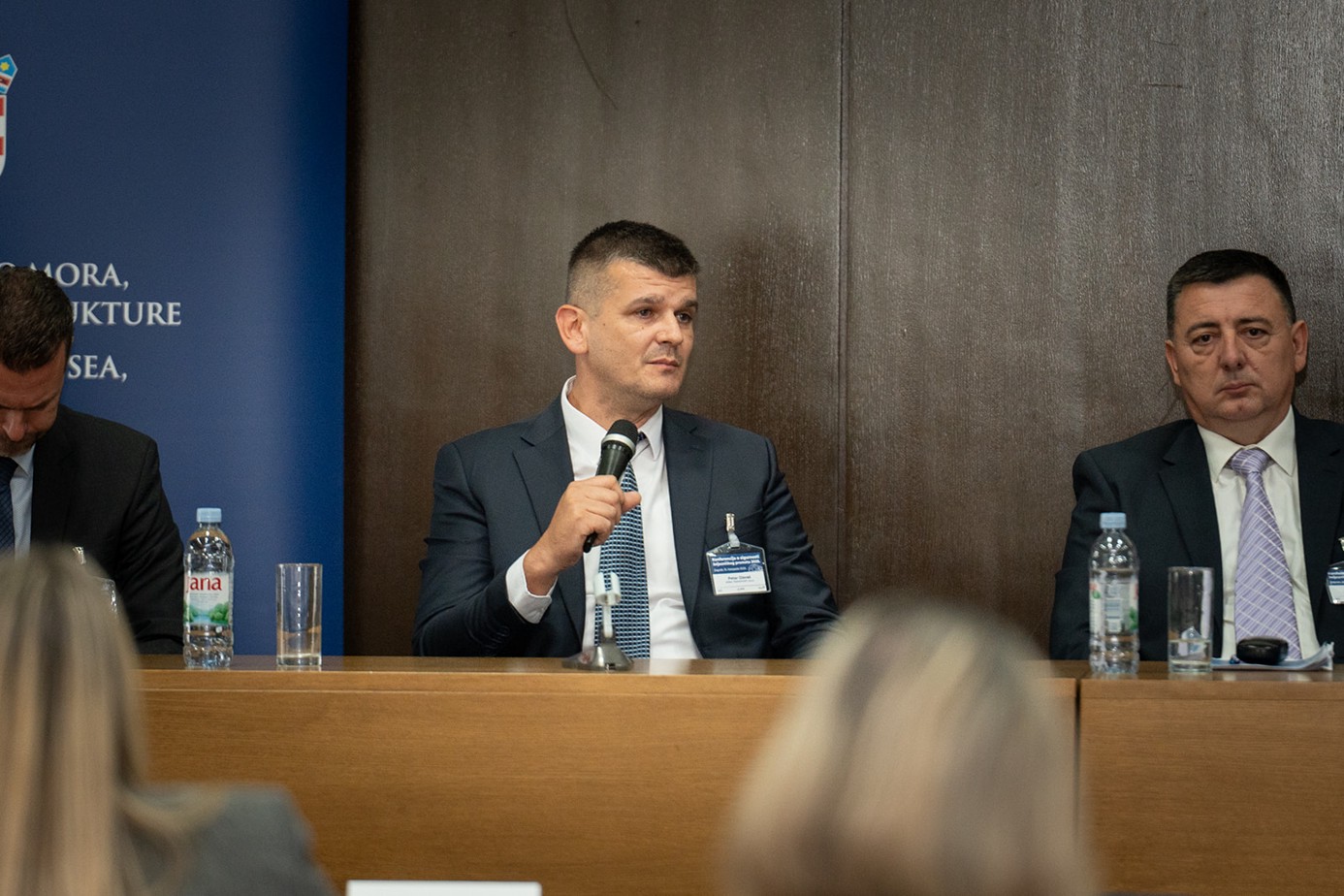
A current problem, which will become more pronounced in the future, is the shortage of qualified workforce. According to the Center for Vocational Education and the Ministry, train drivers and train inspectors are among the most important professions in Croatia, as they are the operational staff who crucially influence the functioning of railway transport. These professions are in shortage, and the age structure of current workers is high, which means it will be necessary to ensure their replacement in the future. However, fewer young people are choosing to study in these fields.
In addition to workforce shortages, there is significant employee turnover in the railway sector.
“Currently, there are about 20 carriers on the market, all looking for the same profile of employees. They often move from one company to another or even go to neighboring countries. ENNA Transport and Logic currently have over 200 employees. Over the years, we will certainly grow with the opening of a new terminal, and we expect, like everyone else on the market, to face challenges in finding new employees. We were the first carrier to bring in workers from third countries, specifically Bosnia and Herzegovina and Serbia. The safety system is similar to ours, the workers underwent necessary training, but the procedure to bring these workers was quite complex,” Glavaš stated.
“The level of safety is currently satisfactory compared to other forms of transport, and despite the accidents that occur, it is necessary to continue educating all traffic participants, especially with all available EU financial resources,” said Tomislav Petanović in his concluding statement.
It was emphasized that carriers and relevant agencies bear great responsibility for maintaining safety, but it turns out that irresponsible behavior by individuals who ignore prohibitions and safety measures is the most common cause of accidents, endangering themselves and all other traffic participants. People are becoming increasingly clever in bypassing safety measures and prohibitions, which further complicates the system’s efforts to ensure maximum safety on the railway.
“We are here to identify certain risks, assess them, conduct analyses, and provide recommendations to minimize these risks. The fact is that the risk in any form of transport can never be zero; it is always present, and we must be aware of that. But together, we must strive to reduce that risk,” concluded Petar Glavaš at the end of the panel.
